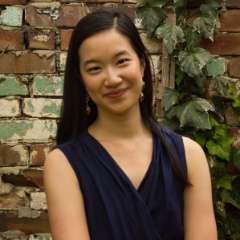I purposely stayed away from the hype surrounding Kunstkamer so I could watch it with an open mind. It was hard to escape the buzz – a megalith of contemporary dance, choreographed in 18 parts, using over 40 dancers, with movement crafted by not one but four world-famous choreographers, and performed only a handful of times by Nederlands Dans Theater before Covid ended the season. And this was all before Instagram dropped with the news that artistic director David Hallberg (last seen on Sydney stages with Natalia Osipova in 2019) would come out of retirement to perform.
But by intermission, it was clear that all the hype actually undersold the magnificence. “I just cannot fault this,” I whispered to my guest, in awe. “The music, the choreography, the set, the conceptual strength. This is masterful – this is dance perfection.”
Inspired by Albertus Seba’s Cabinet of Natural Curiosities (a beautiful 18th-century illustrated science book) Kunstkamer explores the energy between living beings at the intersection of art and science. It was originally created in 2019 as a celebratory work for NDT’s 60th anniversary, aiming to capture the spirit of a house or museum that “collects memories of the past, the energy of the present, and visions of the future”. The word “Kunstkamer” means “room full of art”, and the programme notes tell us that if the stage is the museum, the choreographers are its collectors and exhibitors. The choreographers here are Paul Lightfoot and Sol León of NDT fame, who steered Kunstkamer’s creation, and NDT associate choreographers Marco Goecke and the fascinating Crystal Pite.
The Lightfoot-designed set is an imposing, black Regency-era building with tall windows and doors, much like you’d expect of a museum. But the walls have a mind of their own and move around the dancers, who constantly burst through doorways or playfully slam doors shut. These doors, says León, are symbolic of the coming and going of artists in a constant flow of possibilities.
It's a little hard to describe the choreography of Kunstkamer, which – true to its celebratory genesis – strikes with innovation and overwhelms you in nostalgia all at once. Lightfoot calls it “a beautiful monster” because it is made of many parts, but the assembly of those parts is so masterful that the work feels enriched rather than disjointed. Commemorative nods to the NDT legacy of Jiří Kylián and the Lightfoot-León partnership are strong throughout, and (as expected) most obvious in the Lightfoot-León sections: the clown-like faces, the use of guttural spoken word and breathing, doors and walls that come to life, and the fascinating use of highly abstract movement to convey deeply relatable emotions.
There is a slight change of pace in the sections choreographed by Goecke, to blues music, featuring detailed fidgety movements that are extremely angular but so fast they create an intriguing flow of movement. This style, garnished with touches of Goecke’s humour, made the dancers look like dashboard dolls as they shuffled in and out of the on-stage doors. The sections choreographed by Crystal Pite are beautiful and surprising in the way her work frequently is, showing her characteristic intuition for flow. The dancers seem to roll and breathe as one organism, blooming into shape after exquisite shape. One of the most gorgeous moments of the evening is Pite’s Schubert Memory, where the set doors and the dancers move back to reveal, in one of the “museum” back rooms, the pianist tinged with golden light.
Other highlights include a tender duet choreographed by León to the ever-perennial music of Arvo Pärt, and Lightfoot’s See see, we assemble, where the dancers form a choir and sing Henry Purcell’s “Chorus of Cold People”. I was impressed – not just by the dancers’ powerful singing ability, but by how deeply moving it was to see them come alive as communal musicians as well as dancers.
While seven soloists are credited on the cast sheet (all of whom were simply outstanding on the night I went), Kunstkamer is at heart an ensemble piece. It is a breathtaking experience to see so many dancers on stage, moving with such technical and artistic commitment. I was impressed with how compellingly they inhabited the demanding choreography and mastered the NDT style, arguably one of the gold standards in international contemporary dance. Hallberg’s highly-anticipated return to the stage also does not disappoint. He does not dominate, but instead puts his incredible artistic prowess at the service of the greater work. His role (that of the “keeper”, representing the artistic director or choreographer) will be shared with Jorge Nozal who originated the role.
All in all, Kunstkamer is dance genius and a watershed triumph for the Australian Ballet and Hallberg’s directorship. It’s hard to see how anything this year will top it.




